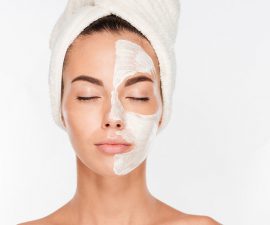The makeup primer is a product that must be found in every girl’s beauty bag. It is an irreplaceable cosmetic when it comes to masking discolourations, smoothing the complexion and fixing makeup. What are the types of primers, what properties do they have and how to apply them?
Types of makeup primers
The makeup primer must match the type of complexion and problems with which it is to cope. The following types can be divided as follows:
- mattifying primer – it works best on oily and combination skin. These cosmetics mattify, absorb excess sebum and reduce the visibility of skin pores. It is not recommended to use them for dry skin;
- silicone primers – they work great with light water-based foundations. They are best for dry skin;
- oil-based primers – thanks to their ingredients, they create an additional layer on the skin that protects, moisturizes and nourishes it. A light-coloured foundation will best suit such a primer. The product is most recommended for dry and oily skin;
- gel primers – thanks to them, the visibility of the pores is smaller and the skin becomes smoother. You can use them both with mineral and traditional foundations. Gel makeup primers will be perfect for people with oily complexion;
- silica primers – they smooth out the face skin on the one hand, but on the other, they can emphasize dry skin patches. They mattify and reduce the secretion of sebum. They work very well with light foundations;
- powder primers – they absorb excess sebum and mattify the skin that is shining in the T zone. Rice powder gives the best results.
How to apply a makeup primer?
The makeup primer should be applied to cleansed and moisturized skin. It is best to use fingertips or a brush for the application. Do you know that a thin layer is sufficient to mask imperfections, even out the colour and smooth out the skin surface? The primer should also be applied under eye shadows. Thanks to it, eye makeup will last longer and will be resistant to abrasion or colour fading.




Leave a Reply